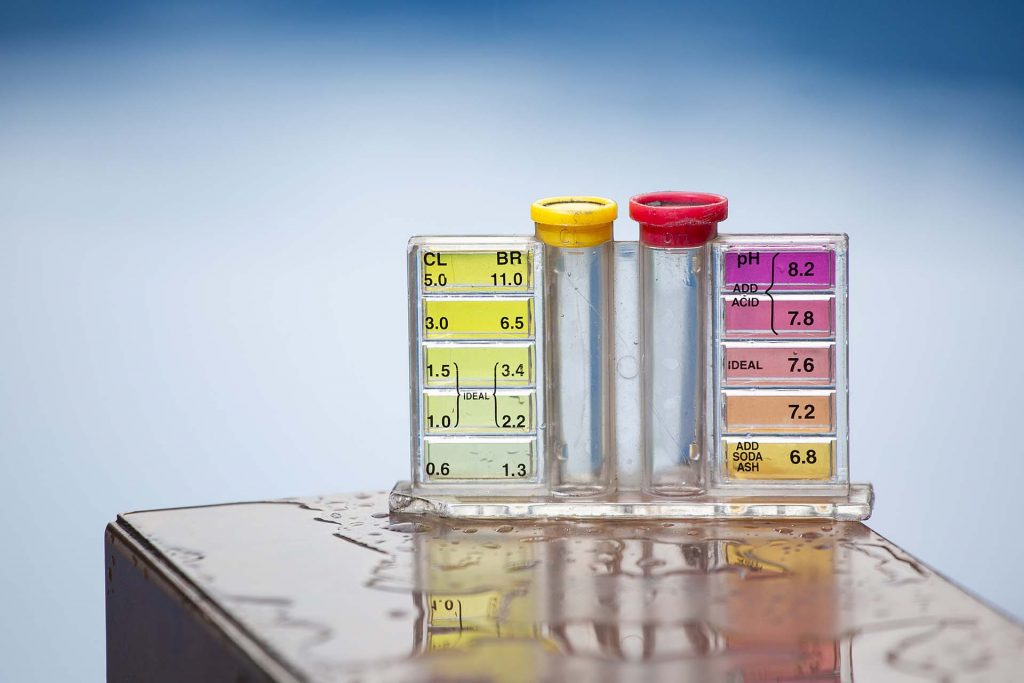A Guide To Alkalinity In Your Pool
Becoming a pool owner is definitely a dream come true! Who does not want that beautiful, fun, and eye-catchy swimming pool on their premises?! However, owning and maintaining a pool is not as dreamy as it sounds. One of the most common problems swimming pool owners deal with is managing the alkalinity of their pool water. If you are also looking for guidelines on maintaining the water quality of your swimming pools, read further!

What Is Pool Water Alkalinity?
In scientific terms, alkalinity refers to the volume of water that is capable of resisting acidification. In the case of swimming pools, maintaining balanced pool water is essential for hygiene purposes. The pool alkalinity levels are measured by observing the pH level of water. If the pool water has a too high or too low pH level, the results can be quite disastrous. According to experts, the ideal level of alkalinity in pool water ranges somewhere between 80- 120 ppm (parts per million) on a pH scale. People often consider alkalinity to be a ‘buffer’ for pH levels. Meaning thereby, if pool water has a proper alkalinity level, it is easier to ensure that swimming pool water has proper pH levels.
How Can You Test Pool Water Alkalinity
There are numerous ways to test swimming pool water alkalinity. The most common tools are:
1. Test Strips
Using test strips is the easiest way to measure pool water alkalinity. They are also more affordable and quite accurate means to test alkalinity levels. There are different types of test strips available in the market depending on the material they are made from. Commonly, test strips are made of salt, bromine, copper, and iron.
To use a test strip, you first need to submerge it in the pool water for a few seconds. After that, take out the strip and hold it at rest. If holding the strip at rest is difficult, you can also keep it on a flat surface for the recommended period. The reagents will start reacting with the pool water and you will notice colors appearing on the test strip. Once that is done, you can match the strip colors to the color scale provided on the package. It is common to find differences in the color of the test strip and the benchmark colors shown on the package. You have to use your discretion in determining the closest value of the total test result.
2. Liquid Testing Kits
Liquid Testing Kits include everything a pool owner needs to test alkalinity levels of pool water on a regular basis. Most of the time they provide accurate results. In some instances, however, they can lead to erroneous results.
While using testing kits, you need to collect a water sample and store it in a container. Every liquid testing kit includes Orthotolidine (OTO) and phenol red. While OTO is used to test chlorine, phenol red tests the pH level. Once you have collected the water sample, you have to add the required number of OTO drops on the chlorine side. Similarly, you have to add the required number of drops of phenol red on the pH side.
Colors on each side will reveal the alkalinity level of water. The chlorine side will turn yellow and the pH side red. Intensity of the colors explains the alkalinity level of water. The darker the red shade is, the higher is the pH level. On a similar note, the yellower the color on the chlorine side, the higher is the chlorine level. To ensure accuracy, compare the colors of your test results with the color chart given in your test kit.

When Should You Test Pool Water Alkalinity
It is recommended to test pool water alkalinity at least twice a week. You should also check alkalinity levels when:
- Many people have used the swimming pool.
- There is a change in the weather.
- A rainstorm has occurred in your area.
- You add water to the swimming pool.
- You begin an algae treatment, etc.
High Alkalinity Level
High alkalinity levels are usually not as hazardous as low alkalinity levels. However, it is still essential to maintain a balance to avoid further expenditure on maintenance.
Effects Of High Alkalinity On The Pool Water
Highly alkaline pool water may result in:
- Cloudy or murky water because high alkalinity allows particles to freely float in water.
- Increase in pH despite adding pH reducer
- Difficulty in maintaining a stable level of pH
- The ability of chlorine to reduce disinfection decreases
- Reduction in water circulation
- Clogging of filters
- High pressure of water
How To Decrease Alkalinity Levels
To increase the pool water alkalinity level to its ideal range (80-120 ppm), you can either add sodium bicarbonate (baking soda) to the water or any kind of product that increases water alkalinity. Generally, all such products have baking soda as an ingredient. After adding baking soda or the required product to the pool water, let the water rest for a couple of hours before going for retesting.
